This year, the theme of British Science Week was growth. Children across the federation were able to engage with a science activity everyday through early morning work, science based stories and discussions. Further activities were arranged in each year group and children from across the federation were able to create posters to represent growth for the British Science Week poster competition.
Reception
The children in reception enjoyed listening to the stories, ‘It starts with a Seed’, ‘Nature’s tiny miracles: Bees’ and ‘A tadpole’s promise’.
On Tuesday the children made a seed bomb in class! They tore up paper, soaked it in water and then rolled a little bit of the pulp into a ball to dry in an ice cube tray. We discussed where seeds come from and what conditions they need to grow (water, soil and light). The children were very excited to take their seed bombs home to see what they will grow into!
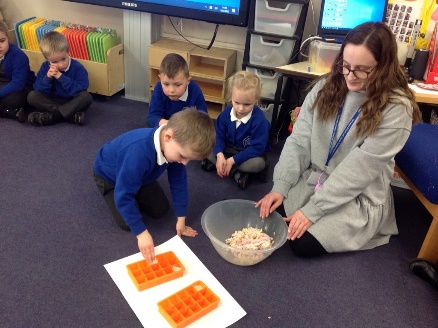

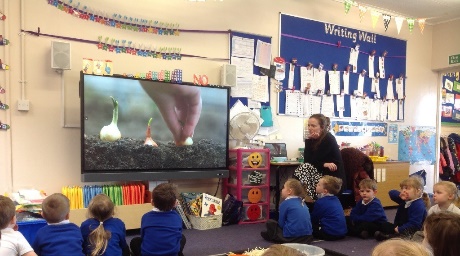
Year 1
The children loved exploring throughout the week all about the different ways we, and the things around us can grow!
We focused in our early morning work, on plant and tree growth and of the properties of different materials. The children really enjoyed this. Mrs Pilbrow also surprised the children by bringing in some daffodils that we could watch grow throughout the day! Some children even had a go at sketching these, and observing their growth.
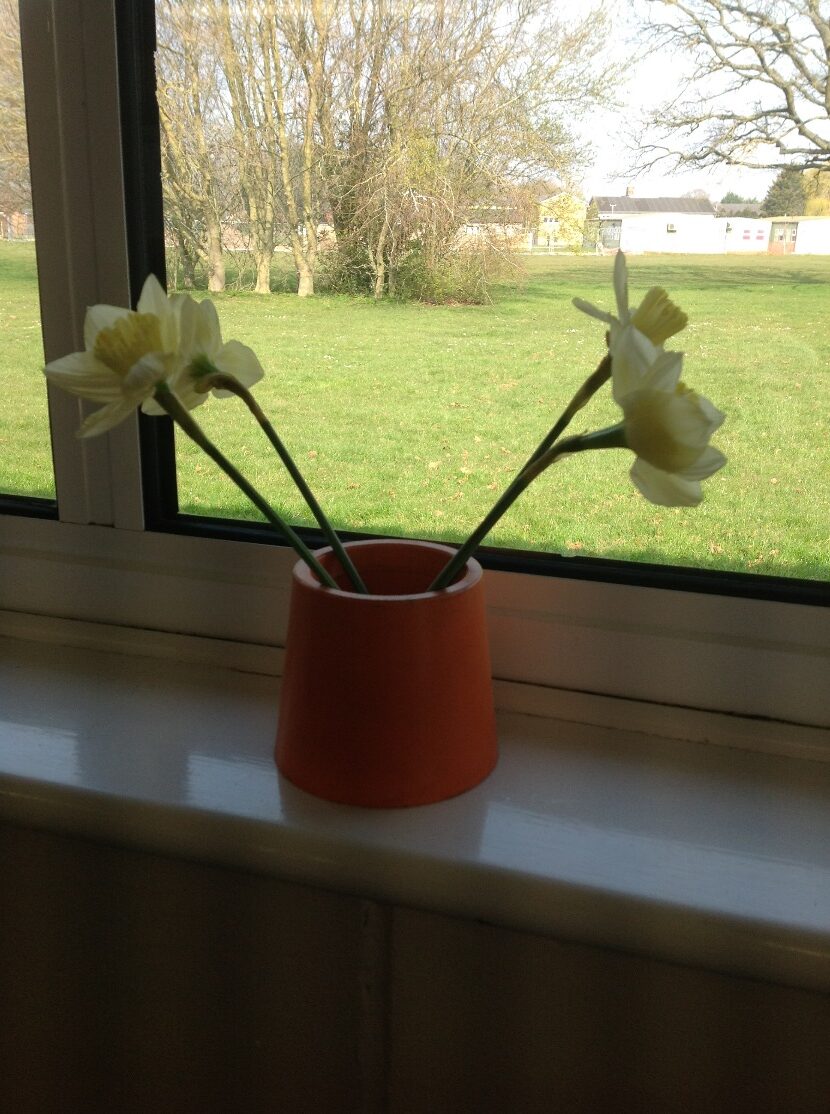
We also found out lots of interesting facts through our science week assembly, for example we found out that the Eiffel Tower grows up to 6 inches taller in the summer. Zach thought this was amazing, and described that “it expands because it’s hot, and then shrinks when it gets cold”.
The children were so excited by this whole week, and many of them spent lots of their break and lunch time, continuing to be scientists, investigating outside spaces, hunting for mini-beasts, and building bug hotels on the playground.
Many children also had a go at helping their bodies to grow by exercising at lunchtime, in our ‘outdoor gym’. The children got out equipment, and we spoke in our classes about how physical exercise is important for their physical development and growth.
Year 2
In year 2, the children thoroughly enjoyed exploring the theme of ‘growth’. We were lucky enough to have an assembly led by Dr. Phil Smith from the Joh Innes Centre, who introduced the week to the children. He talked about how the theme of ‘growth’ can include many different aspects of life, leading to lots of questions and enquiry from the children.
In class, we discussed how the bean that the children had planted had germinated and begun to grow leaves. The children thought about the different conditions that plants need to grow as well as discussing what humans need to grow too.

The children also smashed stereotypes in science. They drew pictures of what they thought scientists looked like before learning about all the different types of scientists. The children really enjoyed learning about the variety of ways people can be scientists and were surprised to discover that lots of everyday people do jobs involving science.



Year 3
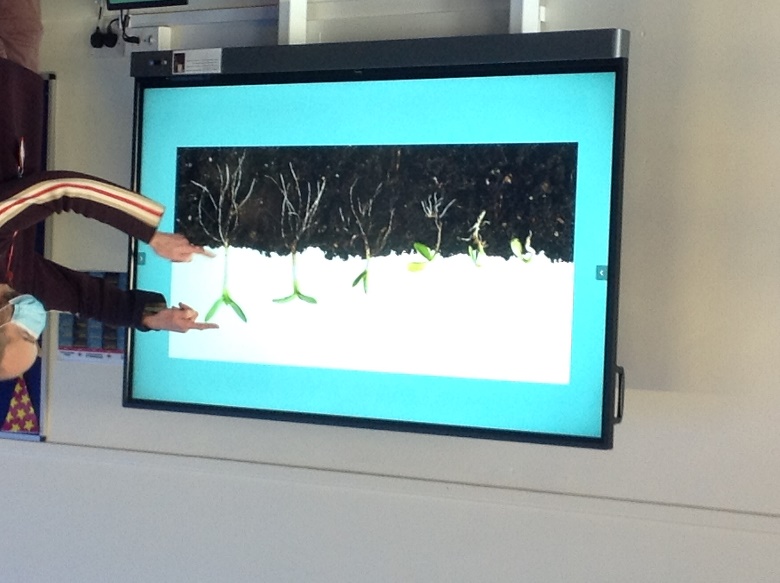 Year 3 kicked off Science week with a familiar local scientist, Dr Phil Smith, a plant pathologist from the John Innes centre. He talked about pattern seeking in science connected to growth. The children really impressed him with their scientific observations and deductions.
Year 3 kicked off Science week with a familiar local scientist, Dr Phil Smith, a plant pathologist from the John Innes centre. He talked about pattern seeking in science connected to growth. The children really impressed him with their scientific observations and deductions.
Throughout the week, the children enjoyed watching unusual short videos linked to their current learning connected to plants, including explosive seed dispersal and the lifecycle of a bean, as well as their prior learning including macro photographic images of crystals and lava. They also enjoyed listening to the story, “A seed is sleepy” and answering questions about the text in guided reading.
After their wellbeing visit from Mrs Owen, the children took some time to observe the growth of the trees on our site and sketched them.

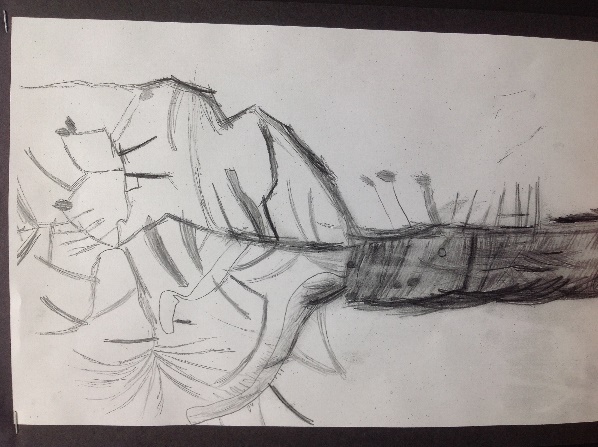
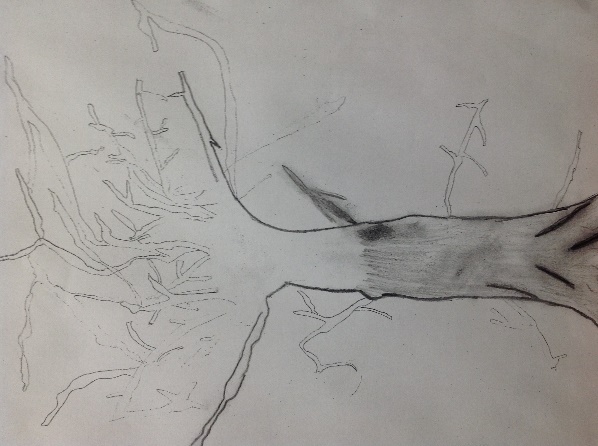
Year 4
Year 4 had an amazing time during British Science Week! On Monday, we joined Dr Phil as he talked about how a scientist might go about conducting an experiment and it was exciting to hear how he played a part in bringing Dippy the Dinosaur to Norwich Cathedral.
During the week, we took part in discussions regarding plants and animals, states of matter, sound and electricity. We watched videos from the science website Explorify and we could start to use our scientific knowledge to explain what’s going on.
On Wednesday, each class enjoyed exploring the school grounds to try and identify tree species. We classified trees into deciduous and evergreen trees and looked carefully at the buds to identify individual species such as oak, cherry and birch trees.

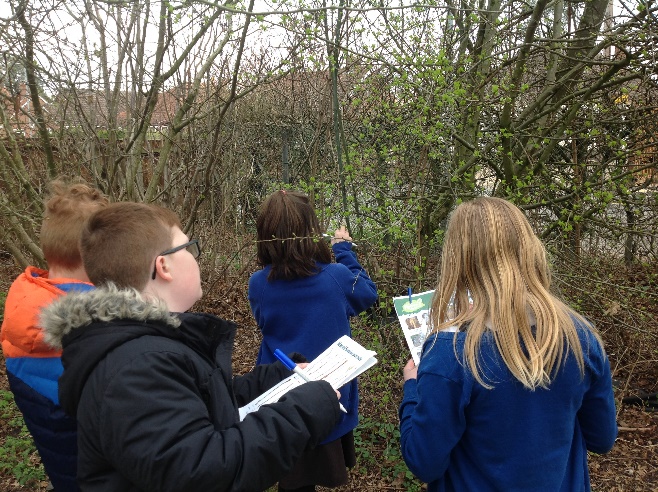
Year 5
In Year 5, the children were investigating ‘do our body parts grow as we get older?’. We collected six hand spans per year group and measured the height of them. As a class, we filled in a table, working out the average height for each year group. After we had the averages, we plotted our data onto a scatter graph. The scientific enquiry we were focused on was pattern seeking. Our results matched our prediction that the older the children are, the taller the hand.



Year 6
The children have had visits from Dr David Murray (a marine biologist) and Dr Phil (a plant biologist). Both visitors talked about what it means to be a scientist; they told the children about their work and explained all of the things that we don’t yet know that future scientists will hopefully find out! The children were able to ask questions about the science our visitors specifically work within and consider a future in science for themselves.
Events across Toftwood Federation – Autumn Term 2020
This term, the children have taken part in a competition to design a poster all about protecting the environment and the different pollution that the planet faces. This was for global Pollution Prevention Week, which also coincided with U.K. Recycling Week. The children watched an assembly with videos and shared their ideas about the effects of pollution and how to recycle. They were then given the task to design a poster with an oak tree as the ‘prize’ for doing so. Almost 40 children across Infants and Juniors submitted amazing posters – have a look at Olivia from CP3’s poster and Katherine from RL5 with her tree! Those children who entered received an oak tree for their garden! The posters were thoughtful, imaginative and well presented, as you can see, and they really show what an amazing bunch of thoughtful and environmentally-conscious children we have across the Toftwood Federation. Planting trees is a major way we can tackle pollution and climate change and the children who received one made a promise to look after it, with instructions on how to care for their tree.


On Friday 11th December, Year 1 and Year 5 classes joined a virtual presentation from Libby Jackson, who is part of British Astronaut Tim Peake’s team. It was all about life at Christmas on the International Space Station (ISS). We learned about Christmas traditions – and why Christmas Day is in fact Celebrated twice – and how Santa delivers presents out in space! At the end of the presentation, which included videos of life on the ISS and how Libby works in Mission Control – schools who had joined from across the country got to submit questions via the ‘chat’ link in the video. One of our questions, ‘What do you like about your job?’ was even seen and answered by Libby Jackson herself!


It has been a different kind of term without visitors and the usual science events in school, so it was really nice to be able to be a part of something as engaging and interactive as the Libby Jackson talk and to be able to do something for the environment by giving away oak trees. We look forward to more exciting events next term!
Toftwood Junior Science Day 2020: part of British Science Week
On Friday 13th March, we were lucky to have two scientists from Mad Science (Dr DNA and Scientiffany) deliver an amazing assembly for the whole of KS2. Dr DNA started by discussing the pressing crisis affecting everyone at the moment: the short supply of toilet paper! An experiment involving lift, thrust, gravity and drag was performed using toilet roll. Wren in Year 3 and an industrial hairdryer helped to propel the toilet paper across the hall.
After singing happy birthday – twice – to Willow in Year 6 to emphasise how long to wash our hands for, two Oliver and Ellouise in Year 3 were selected to play ‘Toilet War: Paper vs Wipes.’ This was an experiment to show what we should put down the toilet (the three Ps – pee, poo and toilet paper) and what not to put down it. One side of the hall was encouraging the toilet paper to get through a funnel first and the other side encouraged the wet wipes to get through first. The funnel represented the toilet pipes and both sides made a whirlwind to show the toilet being flushed. Of course, toilet paper won and the wet wipes just got stuck! To show how strong wet wipes are and that they don’t break down easily, Dr DNA used a wet wipe rope to safely pull Harrison from Year 5 along on a trolley.


Then, photos of blockages in sinks and drains were displayed and an experiment was conducted where Dr DNA, Scientiffany and their volunteers tried to unblock a fat-stuffed sink with washing-up liquid and boiling water. The explosion hopefully reminded people not to put fat, oils and other items down the sink. After all, “Fat and oil down your sink creates a massive stink!”


Finally, a Year 3 volunteer – Zayn – was selected to help get an egg (Eggbert, one of the Mad Science crew) into his ‘house,’ which was a glass flask. Using a match to deprive the flask of oxygen, Eggbert was successfully sucked into the flask. He was then pulled out of his house by Dr DNA, who blew into the flask to put the oxygen back into it. Unfortunately, poor Eggbert didn’t survive Zayn pulling him out of his flask-house!
Thank you to Dr. DNA, Scientiffany and all of the volunteers for such a memorable assembly!
Year 3:
Year 3 took on the topic of ‘Diverse Places’ as part of the ‘Our Diverse Planet’ theme for this year. They started by taking part in an activity called ‘Don’t Tip the Ship.’
As cargo ships have been around for thousands of years, transporting goods around the world, the children built boats and investigated how much weight could be added to the boats before they sank. They learned that the best way of loading a ship is to spread the load (the weight) evenly across the ship. If too much is put in one place, the ship will tip!
After that, Year 3 children worked in groups and read about Bransfield’s journey to the Antarctic in 1819-20. The children researched and talked about what equipment they would need to take with them and why. They looked at maps and charts to learn about Antarctica, Bransfield’s journey there and how diverse habitats on our planet are from one another.
Later in the afternoon, Year 3 joined Year 5 to learn and play games that the older children had developed based on the topic of ‘Diverse People.’ The aim of Year 5’s task was to adapt games for people who may be visually or hearing impaired, or who may have some other kind of physical disability. Year 3 contributed their own ideas to help Year 5 evaluate and develop their games further.
Year 4:
To celebrate ‘Our Diverse Planet’ Science Day, Year 4 took part in a carousel of activities on the topic of camouflage. We learned about the four types of camouflage: concealing, disruptive, disguise and mimicry. As well as learning about animals that do camouflage themselves to their environment, we also considered animals that do not have any camouflage. Each child then each chose an animal that they thought would like to be camouflaged and decided which way they could camouflage them. The children used their imaginations and created some superb camouflaged animals. For example a deer was given green and brown stripes to blend in with its environment this is called disruptive camouflage. An orang-utan was given tiger stripes so that fewer trees would be cut down as people would be afraid of the orang-utan! This camouflage is called mimicry.

Another of our activities was researching animals that use camouflage and the reason for the camouflage. The children worked in pairs to research their chosen animal and create an information poster. We had a variety of different animals including sidewinder rattlesnakes, artic wolves and leaf insects! They all worked really well together and created some wonderful pieces of work.
Building on this, the children took the opportunity to develop their artistic skills through creating their own watercolours based on camouflage art. Using watercolours can be tricky, but year 4 persevered to make some wonderful art. The children were creative with their approach, thinking about the colouration of animals and the patterns they have that help them when they are out in the wild.
All in all, a fabulous day for year 4.
Year 5:
In Year 5, the children learned about games that had been adapted for ‘Diverse People.’ They watched videos and researched games such as Hugby, which is a form of rugby that has been developed for visually impaired people. Instead of tackling, people hug each other and then the person being hugged calls out their team name so that the person hugging them knows whether they are on the same team or not. The children thought about other games and activities and researched their own ways to develop them.

In the hall, the Year 5 children used equipment to pursue their ideas further. They came up with individual and team games that could be played to include people with a range of disabilities and diverse people. As our focus was on inclusion, the children came up with ideas and played games against each other using such things as blindfolds, sitting on chairs or having one arm held behind their backs to simulate what it is like for those who do not have full use of their senses or limbs. This meant that everyone playing had the same chance of scoring or winning a game.
After lunch, Year 5 children researched their own games to play using laptops and tried out ideas for their adapted games in groups. They came up with rules and instructions for their games so that they could rehearse them ready to show a different year group. Each Year 5 class then teamed up with a Year 3 class to teach the children how to play their adapted games. Year 3 contributed their own ideas to help Year 5 evaluate their games scientifically and to help develop them further.
Year 6:
As part of British Science Week, Year 6 focused on adaptation and diversity in plants and animals to explore the theme of ‘our diverse planet’. This links closely with our current Science unit, evolution and inheritance. We studied the work and research of Charles Darwin and learnt how influential his theories are today. Our first activity involved investigating diversity within plants and exploring how plants have adapted to suit new environments. This gave us the information we needed when choosing our own environments and plants to design. Our plants had to have been adapted in some way to highlight the diverse environments such as: a lack of water, very hot conditions, very shady conditions or bright sunshine.

Our second activity highlighted the theory of ‘survival of the fittest’. To do this, we read an interesting story about peppered moths. The story outlined the effects of the industrial revolution on environments. This had an impact on the environments in which everything lived including people, plants, animals and even insects. Originally, the majority of the moths were white so they could camouflage against the lighter birch trees. As pollution discoloured the air, the birch trees became darker, as did the moths. This meant that the darker moths were able to disguise themselves against the bark which resulted in them living longer and the number white moths falling. Our task was to illustrate the story of the peppered moths in a comic strip style to show how the peppered moths changed colour and camouflaged against the bark.
‘Our Diverse Planet’- Spring 2 2020
As part of British Science week the children enjoyed a super science day to learn more around the topic ‘Our Diverse Planet’. We started the day with a show hosted by ‘Mad Science’. They have visited many times and always ensure the children are enjoying their science learning. The scientists discussed the importance of good hygiene including effective hand washing. We believe this is particularly relevant based on current health measures in place by the government. The scientists discussed how we need to care for our planet and how part of this is how we dispose of rubbish (either down sinks or toilets). This builds on the children’s previous learning about recycling and reducing waste. The Mad Science team showed the children how some materials, such as wet wipes, are not biodegradable and can cause blockages. The children were shocked to see real pictures of ‘fatbergs’ that had been created by these non-biodegradable materials as well as congealed oils and fats. Discussions such as these help the children be mindful of how they dispose of waste and how they can protect the planet.
In the afternoon year 1 and 2 were visited by teachers and students from Neatherd high school. The teachers completed an enquiry that investigated the adaptation of finches beaks. This builds on the children’s previous learning about animal life. The children learnt that Charles Darwin discovered on the different Galapagos Islands finches had adapted to have different shaped beaks. They made a prediction about which beak they thought would be best for collecting seeds. The children used chopsticks, tweezers and peg to imitate the shapes of the beaks and took turns to attempt picking up seeds. They recorded their findings in a table and shared their results as a class.
Meanwhile, Reception children explored how to make bubbles, making their own bubble wand and being creative using washing up liquid, paint and straw to make some wonderful bubble pictures. This builds on them exploring a variety of media and materials to be imaginative.
Throughout the week the children have completed several science enquiries which have supported their working scientifically skills and encouraged them to ask their own questions. Year 1 enjoyed investigating whether our bodies are all the same, how animals can camouflage to their environment and which materials are the best insulators (imagining they were trying to survive in Antarctica!)
Year 1 and 2 both investigated how much weight can be added to a ship before it begins to sink. This experiment was based on the Cutty Sark which was used to transport tea from China to London. They took turns to make observations and Year 2 extended this investigation further by using different designs for their boats.
It is fantastic to see the children so enthusiastic about science and able to extend their skills through practical hands on learning!








Science Week 2019, EYFS and KS1
This year’s theme for science week was journeys. The children explored the journeys of food and other journeys they see around them.
Nursery
The nursery children looked at the journey for making bread. We used the book, The Little Red Hen for this. We explored bread dough and corn in the tuff tray. We made our own flour with a pestle and mortar. We made our own bread and butter. We also completed an investigation with a balloon and the yeast. Nursery children made coleslaw. They talked about the journey of the vegetables.
Reception
In Reception we looked at our journey from being a baby to a child. For our home learning we had to find a picture of us as a baby to share with the rest of the class. We all enjoyed looking at each other’s baby photos and we had fun trying to guess who each baby was. We discussed the changes that we could see and noticed small changes such as hair colour and bigger changes like growing much taller!
Year 1
We started the week thinking about where our food comes from. We learnt that food comes from either plants or animals. We sorted different foods into the correct groups.
We used our problem solving skills to create Lego tunnels for a toy car to go through.
We went on a journey round our school grounds to collect different natural objects to make journey sticks. We also used went on a senses journey and thought about all the things we can taste, touch, hear, see and smell around our school.
All the children loved learning about the journey of bees and they all created their own bee headbands! We pretended to be the bees going to collect nectar from the flowers and taking it back to the hive.
We carried out an experiment to see how many people get our germs when we sneeze without a tissue or our hand!
We also learnt about the journey our food takes through our bodies with the help of teachers from Northgate High School.
Year 2
The children made some delicious cheese straws and enjoyed measuring the ingredients using the scales. This linked well with the children’s maths lessons. Later in the week we were visited by teachers from Northgate high school who showed the children the journey food goes through in a workshop called ‘From gums to bums’. The children were amazed by all the things that are happening inside their bodies.
Next the children thought about how plastic is affecting the world and the journey that a plastic bottle can go on. They saw how plastic can end up in landfill, in the ocean or how it can be recycled and reused. The children were shocked by how plastic affected animals. They thought of ways they could make small changes to reduce the amount of plastic they were using such as reusable drinks bottles and reusable bags when shopping.
The children were fascinated learning about the journey of bees, especially how they are important and helpful. We showed the children how bees collect nectar for honey and how they cause cross pollination. We recreated these processes using a simple game. Afterwards the children enjoyed researching more information about bees using books and the internet.
We were visited by scientist Simone Payne from the UEA who taught the children about the journey of germs and how germs can be hiding on their hands. She showed the children the importance of washing their hands correctly. Simone took fingerprints from the children in agar plates and took them back to her lab. She then brought them back to school on the Monday to show how the bacteria had grown. In class we carried out an enquiry called ‘the sneeze zone’. We observed the differences between how far germs from a sneeze travels when you use a tissue compared to when you don’t. We also talked about how we can look after ourselves and were visited by dental nurses on Friday to talk about good dental hygiene.
Throughout the week the children enjoyed sharing a variety of books about famous scientists and inventions. We have discussed how there are many careers that involve STEM subjects (science, technology, engineering and maths. There are lots of children who have been inspired to do a future career using STEM subjects!























